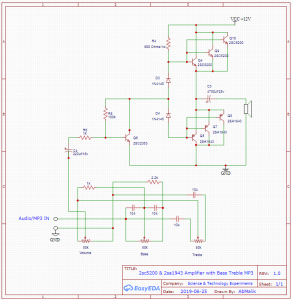Introduction
Car alarms are an essential safety feature for anyone who owns a vehicle. They give car owners peace of mind that their property is protected in the event of theft or vandalism. The basic components of a car alarm system typically involve one or more sensors, a siren, and a keyless entry remote. Sensors can include movement detectors, pressure pads, and window vibration sensors – all of which are designed to detect suspicious activity around your vehicle. When triggered, the siren will sound to deter potential thieves and alert those in the vicinity. Some more advanced systems also offer smartphone alerts when triggered, giving you real-time updates on your vehicle’s security status. Besides providing added security for your vehicle and its contents, car alarms also act as deterrents by discouraging would-be thieves from targeting your car in the first place – making them an invaluable investment for any car owner.
Circuit Diagram
of car alarm circuit diagram

More Circuit Layouts








Working Explanation
of car alarm circuit diagram
Every day a large number of private cars are stolen or broken into. One of the available deterrents to car thieves is a loud car alarm and that is why most new cars are now sold with one fitted as standard. If your car does not already have one, the alarm proposed here may be of interest.
The alarm is based on the fact that when a car is broken into, at least one of the front doors has to be opened. When that happens, the interior light comes on and this causes a slight temporary drop in the battery voltage. The present circuit detects such a drop and when it does so sounds an alarm.
The circuit includes a number of awesome sections as shown in the diagram. When S1‚ is closed, a trigger pulse, delayed by C3, is applied to pin 4 of IC1g When this device has been triggered, its Q output goes high whereupon D5 lights.
Monostable multivibrators (MMVs) IC3a and IC3b are reset by the low level at the Q output of IC1a-When the mono time of the MMVs, which can be set with P3, has elapsed, the alarm is on. It follows that the driver (and his passengers) must have left the car and closed all doors before this happens.
The voltage drop detector is based on comparator IC2 (TLC271). This op amp compares the voltages at its two inputs. That at pin 2 is a reference potential whose level is set with P2. When the battery voltage applied to pin 3 drops, the output of IC2 becomes low, which triggers IC30. The level at which the cause pulse is generated depends, of course, on the setting of P2.
To enable the driver of the vehicle to gain access without setting off the alarm, there has to be a certain delay in opening one of the front doors. This delay is provided by the circuit around IC3a. A trailing edge on pin 5 of IC3a results in a high level at the Q output and a low level at the Q output of this device. A yellow LED (D6) then lights. The time needed to turn
off S‚ (and thus disable the alarm) is set with P1.
If the alarm is not disabled within the preset time, a trailing edge at pin 11 of IC3b will cause the alarm to be sounded for 60 seconds (legally the maximum permissible time). During this period, the starter circuit is disabled, so that the engine cannot be started. After the alarm has ceased sounding, it is on again.
A visual indication of the state of the alarm as shown may be added. When S1‚ is closed, IC16 starts to oscillate and a red LED (D7) begins to flash.
More Circuits, You May Like:
- 100 Watts LM3886 Amplifier Circuit Diagram
- Auto Volume Tone Control Circuit Diagram
- Build Your Own Stereo Amplifier with TDA1552 DIY
- Stereo Amplifier NE5532 Circuit Diagram
- Fifth-Order Low-Pass Filter Circuit Diagram
- Ultra-Low-Noise Preamplifier Circuit Diagram
- Amplifier Drive Indicator Circuit Diagram
- Car Booster Amplifier Adaptor Circuit Diagram
- Digital Audio Input Selector DIY Circuit
- Bass amplifier for surround sound
Conclusion
The verdict is in and it's clear that car alarms are a sound investment. Whilst they may not be the most glamorous of automotive accessories, they offer a valuable layer of security against theft and vandalism, with many models providing extra features like motion detection and remote activation. As car crime rates remain high, no vehicle should be without an alarm system, making it possible to protect yourself, your belongings, and your pride and joy whilst out on the roads.



























